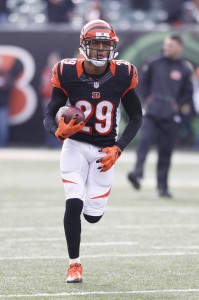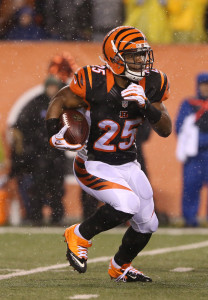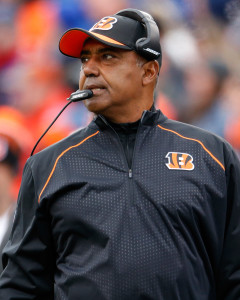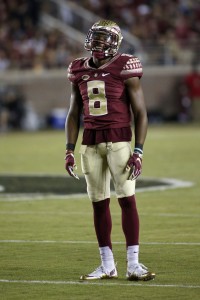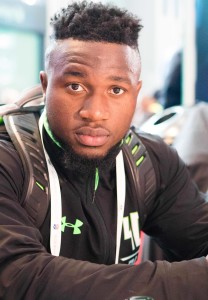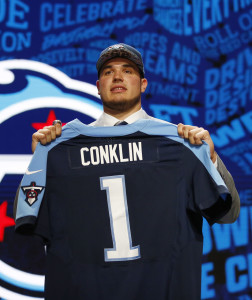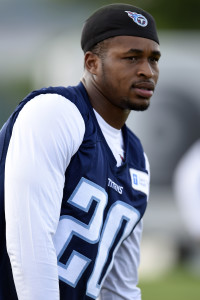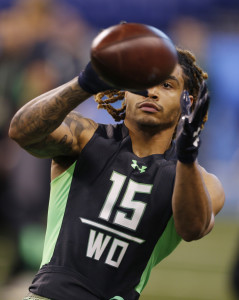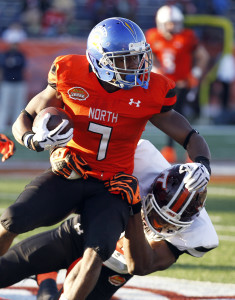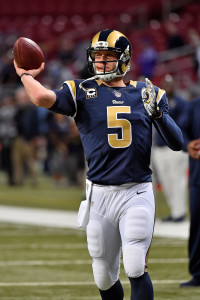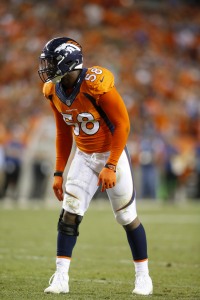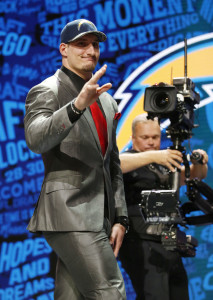The Bengals have a tried and true offseason approach that’s enabled them to reach the postseason for five consecutive seasons — winning a game once they’ve made the playoffs has been a different story, however. Still, the club followed their template: re-sign their own free agents, extend young players that they believe are a part of their core, and bring in a few veterans who won’t affect the compensatory formula. Let’s take a look at how Cincinnati executed that strategy over the offseason…
Notable signings:
- Adam Jones, CB: Three years, $22MM. $6MM guaranteed.
- George Iloka, S: Five years, $30MM. $5MM guaranteed.
- Vincent Rey, LB: Three years, $10.5MM. $3MM guaranteed.
- Brandon LaFell, WR: One year, $2.5MM. $1MM guaranteed.
- Karlos Dansby, LB: One year, $2MM. $700K guaranteed. $500K available via incentives.
- Pat Sims, DT: Two years, $2.3MM. $250K guaranteed. $600K available via incentives.
- Brandon Tate, WR: One year, $1.024MM. $100K guaranteed.
- Eric Winston, T: One year, $1.09MM. $80K guaranteed.
- Brandon Thompson, DT: One year, $840K. $50K guaranteed.
- Taylor Mays, S: One year, $840K. $25K guaranteed.
While the Bengals weren’t able to retain either one of their key free agent receivers, they did re-sign the two most important members of their secondary, agreeing to new deals with cornerback Adam Jones and safety George Iloka. Jones received the seventh-highest full guarantee among all free agent corners, an unusual accomplishment for a player entering his age-33 season. But Jones doesn’t have wear-and-tear of a typical veteran — in fact, Jones has the started the fewest career games among 2005 draftees who can still be considered starters at this point in their careers, and it isn’t particularly close. For example, Jones has only 77 starts under his belt, while Antrel Rolle, the other defensive back selected in the top eight of the ’05 draft, boasts a whopping 146. Jones, for all intents and purposes, only has about half the tread on his tires of a typical starter with a decade in the NFL, making this deal less onerous that it looks at first glance.
Iloka, meanwhile, can be considered a victory of Cincinnati’s “draft, develop, and retain” model — a former fifth-round pick, Iloka blossomed into a full-time starter during his second year in the league, and graded out as the NFL’s No. 15 safety during his platform season, according to Pro Football Focus. 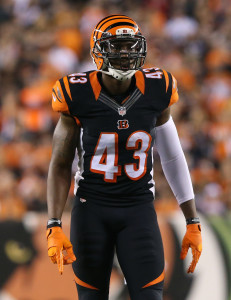 Still, he didn’t fully cash out during the free agent process, garnering only $5MM in guaranteed money. Rodney McLeod, a comparable player who is the same age as Iloka, got more than double that figure from the Eagles, while Tyvon Branch, a middle-of-the-road veteran nearing age-30, equaled Iloka’s guarantees (and only on a two-year deal!). Iloka is incredibly likely to play out his entire contract — most Bengals do — but even then, he doesn’t rank inside the top-10 in average annual value among safeties, and he’ll continue to be pushed further down that list as the cap increases and salaries rise.
Still, he didn’t fully cash out during the free agent process, garnering only $5MM in guaranteed money. Rodney McLeod, a comparable player who is the same age as Iloka, got more than double that figure from the Eagles, while Tyvon Branch, a middle-of-the-road veteran nearing age-30, equaled Iloka’s guarantees (and only on a two-year deal!). Iloka is incredibly likely to play out his entire contract — most Bengals do — but even then, he doesn’t rank inside the top-10 in average annual value among safeties, and he’ll continue to be pushed further down that list as the cap increases and salaries rise.
The Bengals did venture away from their internal free agents to bring in a couple of outside additions, but they were sure to only sign players who had been released by their former clubs, ensuring that they wouldn’t sacrifice any precious compensatory selections (Cincinnati is projected to snag four comp picks, the maximum allowed under the system). Wide receiver Brandon LaFell will line up opposite A.J. Green on the outside, and the Bengals are hoping that the former Patriot can come closer to his 2014 numbers — when he caught 74 passes for nearly 1,000 yards and seven touchdowns — than his 2015 production (37 receptions for 515 yards and zero scores). LaFell, 29, should see a good deal of single coverage as defenses shift their focus towards Green, so he’s a decent candidate for a rebound season.
Linebacker Karlos Dansby, another external addition, was signed to supplement Cincinnati’s front seven — on the surface, he’s replacing fellow veteran A.J. Hawk, but Dansby will be counted on to play a much larger role than Hawk, who saw action on just over a quarter of the Bengals’ defensive snaps last season. Not only will Dansby help  account for the absence of Vontaze Burfict, who is suspended for the first three games of the year, but he’ll stay on the field in sub packages. A starting caliber, three-down linebacker for just $2MM is a solid deal, and Dansby figures to make a sizable contribution to a Cincinnati defense that will seek to match — or better — its 2015 No. 10 DVOA rating.
account for the absence of Vontaze Burfict, who is suspended for the first three games of the year, but he’ll stay on the field in sub packages. A starting caliber, three-down linebacker for just $2MM is a solid deal, and Dansby figures to make a sizable contribution to a Cincinnati defense that will seek to match — or better — its 2015 No. 10 DVOA rating.
Elsewhere in the linebacking corps, the Bengals also re-signed Vincent Rey, a former undrafted free agent who’s made his NFL name as something of a jack-of-all-trades ‘backer. Need a direct replacement for Burfict while he’s suspended? Vincent Rey. Who will stay on the field in nickel packages alongside Dansby? Vincent Rey. Special teams unit needs an extra body? Vincent Rey. Rey played the most defensive snaps of any Cincinnati linebacker in 2015, and given that Dansby is aging, Burfict will miss almost 20% of the season, and Rey Maualuga is a two-down run-stuffer, Rey could end up leading the Bengals LBs in playing time once again.
Pat Sims appeared in only eight games in 2015, but the Bengals apparently saw enough during his second tenure with the club that they re-signed him to a two-year deal (though it’s essentially a one-year deal with an option for 2017). The 30-year-old Sims will compete with fourth-round rookie Andrew Billings for playing time as a rotational lineman behind starter Domata Peko. Fellow defensive tackle Brandon Thompson tore his ACL in January, but he still generated interest from the Seahawks before inking a new deal with Cincinnati. The PUP list is clearly an option for Thompson as he recovers, but he could be late-season contributor.
Brandon Tate, Eric Winston, and Taylor Mays are all veterans with experience in the Bengals’ system, and none figure to have large responsibilities next season if all goes as planned. Tate’s lack of dynamic ability as a return man has frustrated Cincinnati fans for years, but he’ll continue to act in that capacity until the club finds someone who’s as reliable. Winston will compete to serve as the second swing tackle behind Jake Fisher, while Mays, in his second Bengals tour, will handle special teams duties and play the occasional dime linebacker role. If any player from this trio plays significant snaps in 2016, something went terribly wrong.
Continue reading about the Bengals’ offseason…

